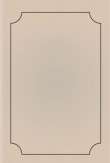You are here
قراءة كتاب ABC's of Science
تنويه: تعرض هنا نبذة من اول ١٠ صفحات فقط من الكتاب الالكتروني، لقراءة الكتاب كاملا اضغط على الزر “اشتر الآن"
crust to crack almost from pole to pole and formed North and South America. The eruptions in Europe, Asia, and Africa were greatly scattered. Australian soil is deficient in phosphorus, which shows it is foreign and represents the small body which did not entirely bury itself. This caused some of the earth's land surface to be below the sea level; also caused the earth's axis to change at a very slow rate of about 77 yards per year. This will require many thousands of years for the North Pole to become the South Pole. For many years the Polar star appeared "fixed" at the earth's north axis.
7. Mars is carried around the sun by its planet current at a distance of 140,000,000 miles, which requires 687 days, and rotates every 24 hours, 37 minutes, and 22 1/2 seconds. Diameter, 4,200 miles. Mars has two satellites and is not abundant in vapor which causes its reddish appearance, therefore vegetation and animals are scanty.
8. Jupiter is the largest major planet. It makes a great jump from the sun of 483,000,000 miles, carried by its planet current to complete its orbit in 12 years. Rotates every 9 hours, 55 minutes, and 37 seconds. Diameter, 88,000 miles; has seven satellites. The climate has a very even temperature due to its fast rotation.
9. Saturn, the beauty of the skies, carried by its planet current around the sun at its main distance of 883,000,000 miles (a greater distance of 400,000,000 miles than Jupiter) which requires about 29 1/2 years. Rotates once every 10 hours, 14 minutes, and 23 seconds. Diameter, 75,000 miles. It has ten satellites and three rings of unconcentrated material. The cape ring is about 9,000 miles across, the other two about 16,000 each. Diameter of rings about 170,000 miles, which makes the rings very close to the surface.
10. Uranus is carried by its planet current around the sun at a great distance of 1,778,000,000 miles, which requires about 84 years. Rate of rotation unknown. Diameter, 31,000 miles. It has four satellites.
11. Neptune is the farthest from the sun. Its main distance being 2,792,000,000 miles; carried by its planet current over its orbit once in 164 years, 9 months. Diameter, 37,000 miles. Period of rotation unknown. Has one satellite. At Neptune we haven't taken a step but our next neighbor is across the divide. Let us have a fairy dream and travel from the sun to Neptune in a straight or direct course at the rate of 1,000,000 miles an hour; it would take us 116 1/3 days to reach Neptune.
[Figure: Line drawing, captioned "The solar system."]
CHAPTER IV ACROSS THE DIVIDE
1. Crossing the divide (Abyss) we encounter other systems of about 25,000,000,000, or the first magnitude. Our most powerful glass reaches the 16th.
Magnitude is very uneven and irregular, and beyond this there is no end.
2. Many constellations have more than one sun, while others are double, quadruple, and multiple. It is estimated a brilliant star, and can be seen; of these over a million have been catalogued and only about 25 whose distance have been measured.
CHAPTER V FLOURISHMENT OF THE EARTH
1. The earth reached its state of concentration, and the vapor in great clouds enveloped the heavier substance. The earth being heaved up by volcanoes (caused by the vapor coming in contact with the heated material); as the vapor reached its state, rain fell on the earth crust, and thus rivers, lakes, and oceans were formed.
2. Here animal and vegetable matter began to flourish.
3. Great deposits of protoplasm became concentrated over the earth's surface; from the deposits sprang all kinds of vegetables and animals that flourish, and many more families than inhabit the earth to-day became extinct.
4.



